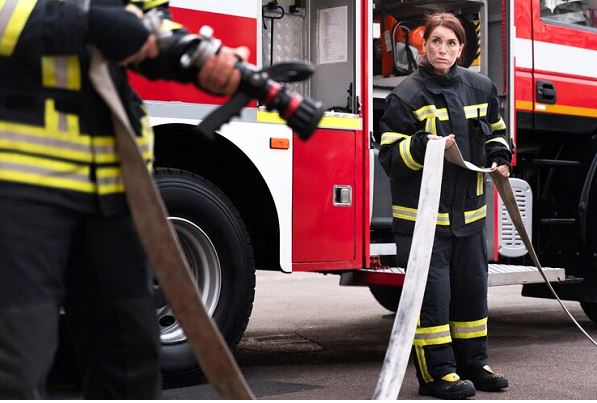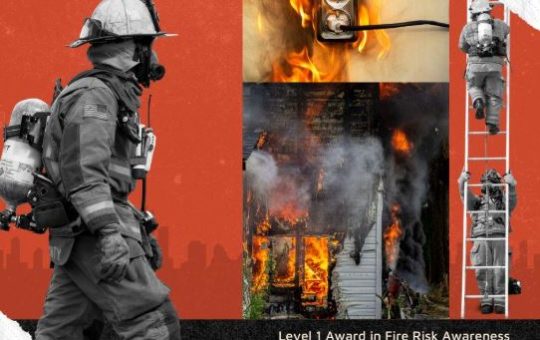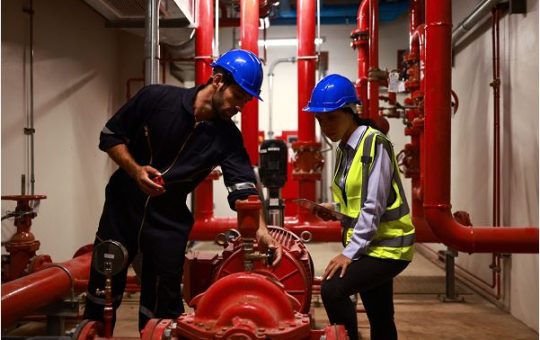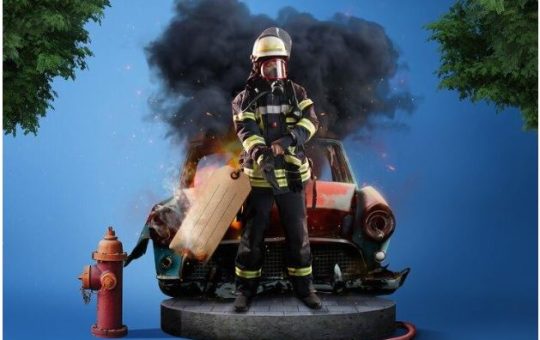
Fire Safety Level 2
Fire Safety Level 2 (Intermediate) Course
Course Overview The Fire Safety Level 2 Intermediate Course builds on foundational fire safety knowledge to equip individuals with advanced skills in fire prevention, risk assessment, and emergency response planning. This course is ideal for supervisors, managers, safety representatives, and anyone responsible for ensuring fire safety in workplaces or public environments. Participants will learn how to implement fire safety policies, conduct thorough fire risk assessments, and lead teams during fire emergencies effectively.Benefits- Advanced Knowledge: Develop a deeper understanding of fire safety management principles.
- Compliance Leadership: Ensure compliance with legal and regulatory fire safety standards.
- Enhanced Safety Culture: Promote fire safety awareness within organizations.
- Leadership Skills: Gain the ability to lead evacuation procedures and manage emergency situations.
- Career Advancement: Strengthen your qualifications for supervisory roles in safety and risk management.
- Conduct comprehensive fire risk assessments and identify potential hazards.
- Develop and implement workplace fire safety policies and procedures.
- Supervise the use and maintenance of fire safety equipment, including extinguishers and alarms.
- Lead fire drills and ensure effective evacuation strategies.
- Understand fire-related legal responsibilities for employers and employees.
- Investigate fire incidents and recommend corrective measures to prevent recurrence.
- Job Roles: ⦁ Fire Safety Officer ⦁ Health and Safety Supervisor ⦁ Fire Warden/Marshal
- Advanced Training: ⦁ Fire Safety Level 3 (Advanced) ⦁ NEBOSH Fire Safety and Risk Management Certification ⦁ Fire Investigation Specialist Courses
- Industries: ⦁ Construction and Engineering ⦁ Hospitality and Events Management ⦁ Healthcare Facilities ⦁ Corporate Offices and Retail Establishments
- Pathway to Leadership: Graduates of Fire Safety Level 2 can pursue leadership roles in safety management, work as fire safety consultants, or specialize further in risk mitigation and emergency planning.
The Fire Safety Level 2 Intermediate Course includes the following key modules:
- Fire Safety Responsibilities
⦁ Roles and duties of fire safety officers and team leaders
⦁ Understanding the importance of fire safety policies - Fire Risk Assessment Process
⦁ Identifying fire hazards and assessing risks
⦁ Evaluating existing fire prevention measures - Fire Safety Equipment and Systems
⦁ Advanced use and management of fire extinguishers, alarms, and sprinklers
⦁ Inspection and maintenance protocols - Evacuation Planning and Drills
⦁ Designing effective evacuation routes and procedures
⦁ Coordinating fire drills and improving team readiness - Fire Incident Management
⦁ Investigating causes of fire incidents
⦁ Reporting and recommending improvements - Fire Safety Legislation and Compliance
⦁ Detailed overview of regulatory requirements
⦁ Practical steps for compliance with fire safety laws
Upon successful completion of this qualification, learners will be able to:
Understand Fire Safety Legislation: Interpret and apply relevant fire safety laws, standards, and workplace regulations.
Conduct Fire Risk Assessments: Identify hazards, assess risks, and implement practical control measures to reduce fire risk.
Develop Fire Safety Procedures: Establish and maintain fire safety policies, evacuation plans, and emergency response procedures.
Lead Fire Safety Teams: Supervise and coordinate fire wardens, marshals, and employees during drills or emergencies.
Operate and Maintain Equipment: Demonstrate competence in inspecting, maintaining, and managing fire protection equipment and systems.
Promote Fire Safety Culture: Encourage safe practices and foster a proactive approach to fire prevention among colleagues.
Investigate Fire Incidents: Assist in investigating fire causes, documenting findings, and recommending corrective actions.
Communicate Effectively: Relay clear instructions during emergencies and coordinate with external emergency responders.
Ensure Continuous Improvement: Monitor and review fire safety performance, identifying opportunities for procedural enhancement.
The Fire Safety Level 2 (Intermediate) Course is designed for individuals with basic fire safety knowledge who wish to advance their understanding and take on supervisory or managerial responsibilities for fire safety within an organization. It is suitable for those involved in ensuring compliance, conducting risk assessments, and leading fire safety initiatives. This course is ideal for:
Supervisors and Line Managers responsible for workplace fire safety and emergency response.
Fire Wardens or Marshals seeking to strengthen their technical and leadership skills.
Health and Safety Representatives tasked with implementing and monitoring fire safety procedures.
Facilities and Maintenance Personnel overseeing fire protection systems and evacuation routes.
Team Leaders and Shift Supervisors who manage staff during emergency situations.
Employees in High-Risk Industries such as construction, hospitality, manufacturing, or healthcare.
Individuals Progressing from Level 1 Fire Risk Awareness who are preparing for advanced roles in fire safety management.
Our assessment process is designed to ensure every learner achieves the required level of knowledge, skills, and understanding outlined in each course unit.
Purpose of Assessment
Assessment helps measure how well a learner has met the learning outcomes. It ensures consistency, quality, and fairness across all learners.
What Learners Need to Do
Learners must provide clear evidence that shows they have met all the learning outcomes and assessment criteria for each unit. This evidence can take different forms depending on the course and type of learning.
Types of Acceptable Evidence
Assignments, reports, or projects
Worksheets or written tasks
Portfolios of practical work
Answers to oral or written questions
Test or exam papers
Understanding the Structure
Learning outcomes explain what learners should know, understand, or be able to do.
Assessment criteria set the standard learners must meet to achieve each learning outcome.
Assessment Guidelines
All assessment must be authentic, current, and relevant to the unit.
Evidence must match each assessment criterion clearly.
Plagiarism or copied work is not accepted.
All learners must complete assessments within the given timelines.
Where applicable, assessments may be reviewed or verified by internal or external quality assurers.
Full learning outcomes and assessment criteria for each qualification are available from page 8 of the course handbook.
Top Courses
No results found.
Related Courses
Let's Get in touch
Deleting Course Review
Course Access
This course is password protected. To access it please enter your password below:



